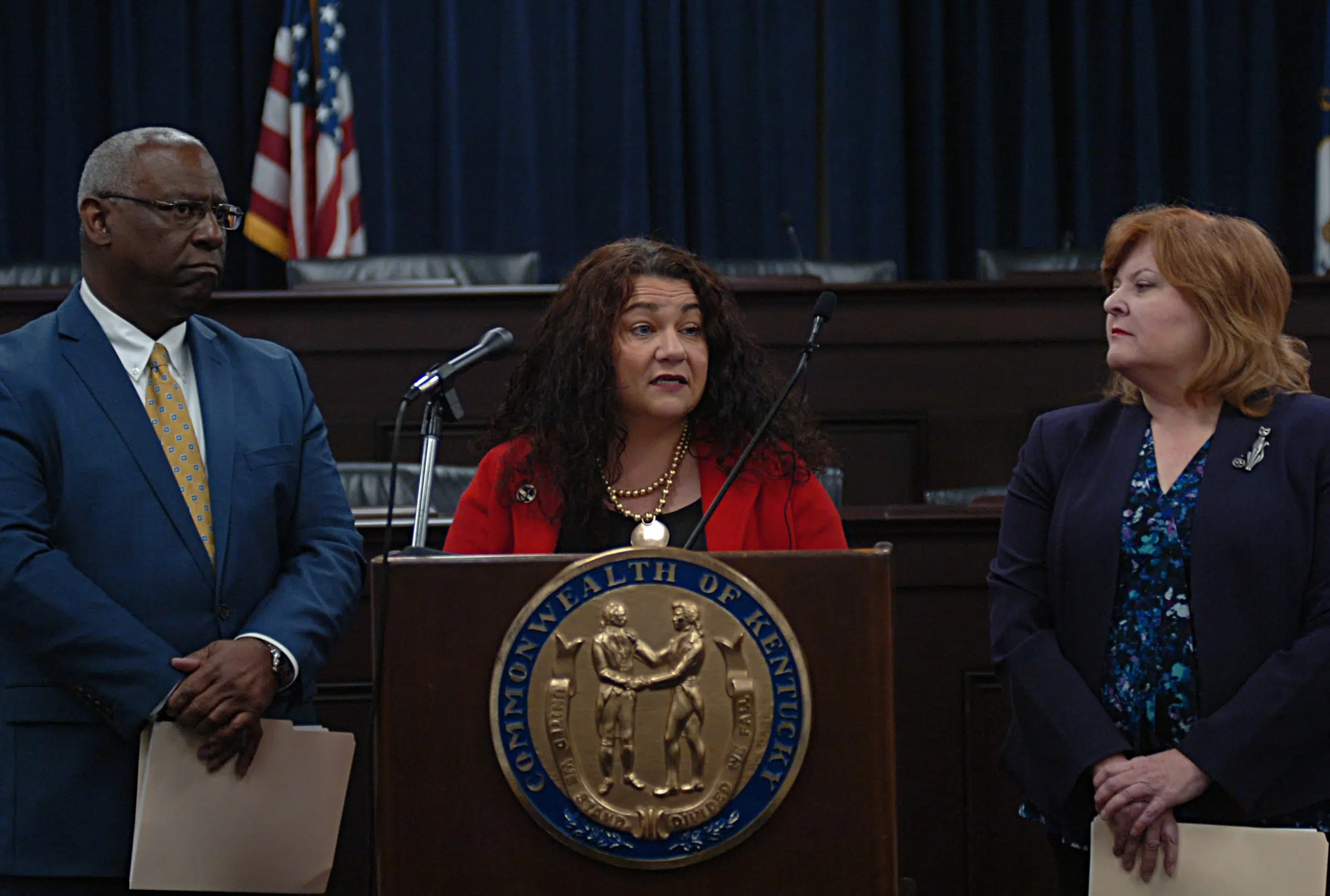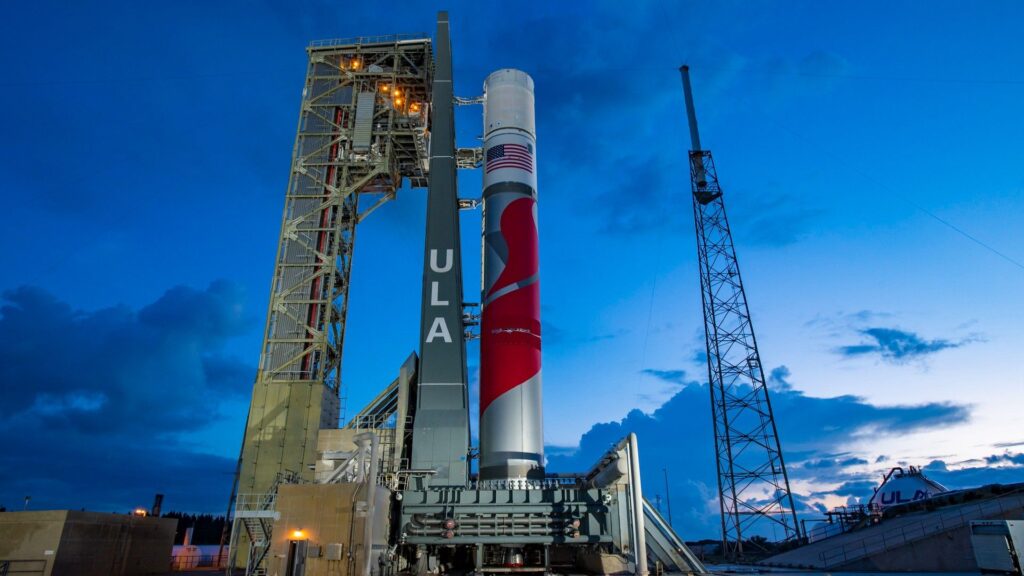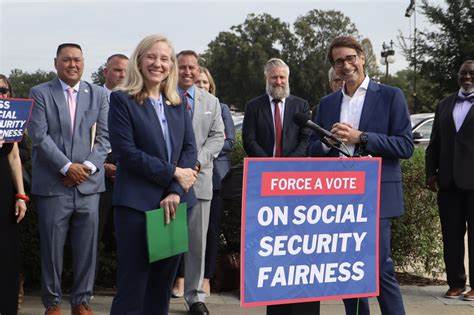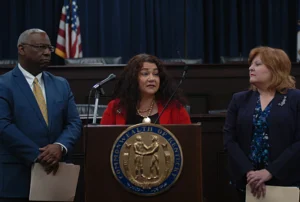The U.S. Space Force has confirmed that the first national security mission for United Launch Alliance’s (ULA) Vulcan rocket is now anticipated no earlier than April 2025. The delay, announced on December 18, 2024, comes as the Vulcan rocket continues its certification process under the National Security Space Launch (NSSL) Phase 2 contract.
The mission, designated USSF-106, will mark Vulcan’s inaugural role in deploying a national security payload for the Space Force. Here’s a breakdown of the latest updates, the certification process, and what this means for the Vulcan program.
Why the Delay? Certification Challenges
The Vulcan rocket must achieve certification before it can participate in NSSL missions, which require stringent evaluation to ensure reliability for high-stakes national security operations.
Current Status:
- The U.S. Space Force’s Space Systems Command (SSC) has not completed its technical evaluation of Vulcan’s certification criteria.
- The government is collaborating with ULA to address additional data requirements, with certification expected by the first quarter of 2025.
ULA’s Readiness:
ULA, which has stacked the Vulcan rocket at Space Launch Complex 41 (SLC-41) in Cape Canaveral, Florida, stated it is ready to launch in early 2025, pending certification approval.
Certification Process: A Collaborative Approach
The Vulcan Certification Plan, established in 2018, was developed in collaboration with the U.S. government to streamline the certification process.
Two Certification Options:
- Independent Development:
- ULA could have opted to independently develop and test Vulcan, submitting the data to the government post-development.
- This approach typically requires three to four certification flights.
- Integrated Collaboration (Chosen):
- ULA chose to work shoulder-to-shoulder with government teams throughout development.
- This collaborative process reduces certification flights to two and ensures continuous data sharing.
ULA President and CEO Tory Bruno confirmed that the certification process is nearing completion, with final government verification and approval underway.
Technical Challenges: GEM 63XL Anomaly
A critical aspect of the certification review involves investigating an anomaly from Vulcan’s second test flight on October 4, 2024.
Anomaly Details:
- One of the two Graphite-Epoxy Motor (GEM) 63XL solid rocket boosters lost part of its nozzle less than a minute after launch.
- Despite the loss of thrust, Vulcan successfully compensated and completed the test mission.
This anomaly is under investigation, and its resolution will be crucial for final certification.
The Vulcan Program and Its Importance
The Vulcan rocket represents the next generation of ULA’s launch vehicles, designed to replace the Atlas V and Delta IV rockets. It incorporates advanced features such as:
- Increased Payload Capacity: Tailored for both commercial and national security missions.
- Cost Efficiency: Leveraging reusable components to reduce operational costs.
- Enhanced Reliability: Incorporating lessons learned from previous ULA rockets.
Mission USSF-106: A Milestone for Vulcan
The USSF-106 mission is a landmark for Vulcan as it transitions into national security operations. It also reflects ULA’s commitment to maintaining U.S. access to space for critical defense missions.
Why It Matters:
- National Security: The mission will deploy a classified payload for the U.S. Space Force, emphasizing Vulcan’s role in supporting defense strategies.
- Global Competition: The Vulcan rocket strengthens the U.S.’s position in the increasingly competitive space industry.
Future Outlook for Vulcan and Space Force Collaboration
While the delay to spring 2025 may affect timelines, it also underscores the meticulous nature of the certification process for national security launches.
Key Takeaways:
- The collaborative approach to Vulcan’s development highlights the importance of partnership between ULA and the U.S. government.
- Addressing technical challenges like the GEM 63XL anomaly will enhance Vulcan’s reliability for future missions.
- Once certified, Vulcan will play a pivotal role in the U.S. Space Force’s NSSL Phase 2 program, ensuring mission success for years to come.
A Program on the Brink of Breakthrough
The Vulcan rocket’s journey to certification reflects the complexities of developing a launch vehicle for national security missions. While delays are not uncommon in such high-stakes programs, ULA’s collaboration with the U.S. Space Force ensures that Vulcan meets the rigorous standards required for these critical operations.
As Vulcan prepares for its first national security mission in spring 2025, its success will signify a major milestone in U.S. space capabilities, reinforcing the nation’s commitment to innovation and security in space exploration.











